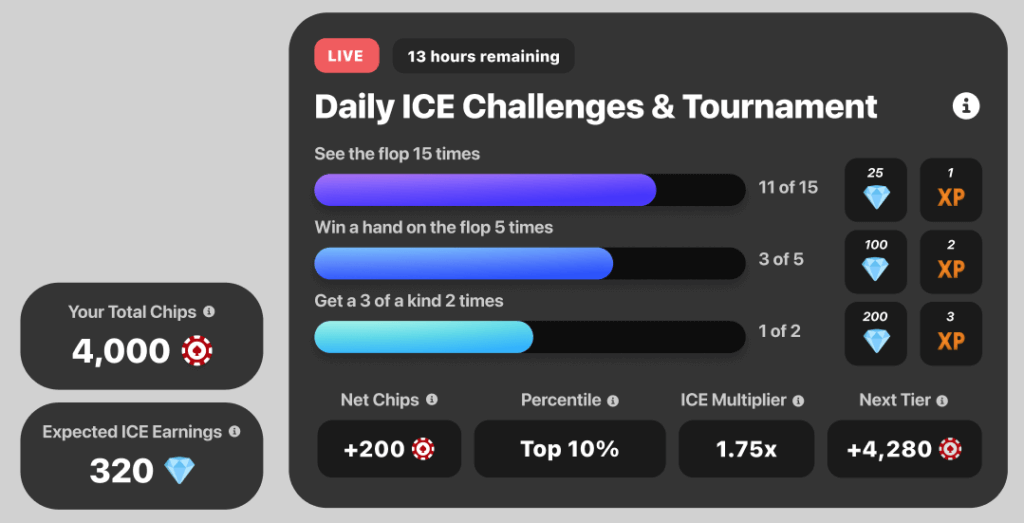There’s a lot of buzz surrounding the metaverse at the moment, and one of the most interesting ways this is playing out is through play-to-earn (P2E) gaming. This new space has helped some people to quit their day job to play games full time, earning a lot more than when they were employed.
Some of the top players within the most popular P2E game, Axie Infinity, have been earning more than $10,000 per month. How is this possible? And where is all that money coming from?
In short, gamers complete objectives in a P2E game to earn real money, paid out in cryptocurrency.
The way players earn money is different in every game. In Axie Infinity, you earn rewards by battling against in-game monsters and other players, as well as completing daily quests. The rewards you earn are yours to keep and can be taken outside of the game platform and exchanged for other cryptocurrencies or fiat currencies, like USD.
This is a major departure from how the current gaming industry operates and it’s transforming people’s lives. What’s even more exciting is that it’s only in its infancy.
The existing gaming industry
Globally, the gaming industry is worth approximately $180 billion. The COVID-19 induced global pandemic sent major tailwinds behind gaming growth in 2020 which continued into 2021. And, despite China’s best efforts to curtail its younger generations away from the lure of video games, the Asia Pacific region represents the largest segment of gamers by a long way.
It’s no wonder then that play-to-earn gaming has also taken off in the region.
Spending time playing video games has transitioned from being something that parents feared would corrupt and ruin their children’s future lives, to being a potential path to serious wealth.
With the rising popularity of esports, streaming platforms, and lucrative sponsorship deals, gamers have been able to reach celebrity status. The highest-earning Fortnite player, Ninja, earns an estimated $500,000 per month from his streaming revenue.
All that said, the real winners here are the game developers. Epic Games, the creators of Fortnite, reported annual revenue of over $5 billion in 2020. Activision Blizzard, most commonly known for its Call of Duty series of games, has a market cap of over $50 billion.
How current gamers earn an income couldn’t be farther from the new play-to-earn model. These include:
- Salaries, paid by esports teams.
- Streaming, paid by platforms like Twitch and YouTube.
- Sponsorships, paid by gaming brands.
- Prize money, paid by esports leagues like The Overwatch League.
The majority of these income streams aren’t available to the average gamer – you need to be one of the top gamers, which requires a substantial time investment. Twitch says that, on average, “expert streamers can make between $3,000 to $5,000 each month playing around 40 hours a week.”
For all of the money the top gamers are making, it pales into insignificance when you look at the revenue that’s created by the game developers. When you think about how much these top gamers influence a game’s popularity, you’ll start to notice the imbalance.
How play-to-earn gaming is different
Unlike the traditional gaming industry, P2E games deliver the majority of their monetary value back to the gamers. Not only that, the ability to earn is democratized across all levels of playing ability. Sure, top gamers are going to earn more, but the gap is significantly smaller than in the current gaming space.
This is turning even casual players from consumers to creators. The fact that you lose nothing by being a poor player only further reduces the barriers to entry.
Some gamers are playing P2E games for just 2-3 hours a day and earning thousands of dollars a month. That’s not a bad return.
Here are two examples of how different P2E games work.
Decentral Games
Decentral Games is a play-to-earn casino game. Gamers start by creating an account, using their cryptocurrency wallet (e.g. MetaMask or Coinbase Wallet) to log in.

At this point, they’ll be dropped into the casino, where they can explore the different games available through their virtual avatar. There are two options at this point:
- Play without rewards.
- Play to earn.
While the fundamental experience is the same in either option, playing where you earn rewards requires you to first own one of the Decentral Games wearable NFTs (e.g an item of clothing for your virtual avatar, like sunglasses or a jacket). You can either buy one of these yourse
All of the proceeds of the NFT sales go into the Decentral Games treasury, which is used to fund game development, marketing, and support.
Once you have your NFT, you can play any of the games indefinitely for free, earning rewards in the process. You’ll be given a daily allocation of casino chips that you’ll use to play with. If you win, get into the daily leaderboard or complete daily challenges, you’ll be given cryptocurrency rewards.

These rewards go straight into the cryptocurrency wallet you used to log in, and you’re free to swap them into fiat (e.g. USD) at any point. If you purchased one of the NFTs, you could also sell that for a profit on the secondary market or delegate it to another player for 30% of their earnings.
Axie Infinity
Axie Infinity is a completely different game to Decentral Games and resembles something more like a game like Pokémon. You build a squad of cute little monsters, known as “Axies”, that you can battle, raise, and trade with other players.
Similar to Decentral Games, you need to purchase some of the Axie Infinity NFTs to play. In this case, each of the Axies is an NFT (think of them as like an NFT version of a Pokémon card), and you need at least three of them to begin playing. They can be purchased in their marketplace, and at the time of writing, the lowest price you can purchase an Axie for is $98.Each Axie has its own stats that will play a role in how effective they are in battle, so you can imagine how some of the more powerful Axies will be priced higher. This is one of the criticisms that some P2E games have faced as it starts to feel a little more like pay to win than play to earn.

Once you have your squad of Axies, you can begin exploring the virtual world within the game. You’ll earn rewards for completing daily challenges, battling monsters in adventure mode, and battling other players.
Outside of the earnings you get from playing the game, you can sell your Axie for a profit on the marketplace, or even breed your Axie with others. Ultimately, you own your Axie and are free to trade it at any point.
A trend in the P2E gaming space has been the rise of gaming guilds. These are groups that buy up several NFTs that are used for gameplay and loan these to players as well as providing coaching in exchange for a cut of their earnings. This is the esports model of the traditional gaming industry tailored for blockchain-based games.
One of the top gaming guilds, Yield Guild Games, has a market cap of $700 million and owns assets across a wide range of P2E games.
Where does the money come from?
At this point, you may be wondering who’s funding all of these gaming rewards.
The simple answer is that the game platform issues reward tokens that are backed by a reserve of other cryptocurrencies.
Anyone can contribute to the reserve by depositing other cryptocurrencies like USDC or ETH, and in return, they earn interest. This means that when reward tokens are paid out to players, they’re backed by other trusted assets. This ensures that a player can always exchange their reward tokens.
Some players have made a lot of money from starting to play a game that then skyrocketed in popularity, meaning the reward tokens they were paid out were suddenly worth a lot more.
Axie Infinity is a great example of this. At the beginning of April 2021, the market value of each of their reward tokens ($SLP) was $0.05. By the end of July, it had passed $30.
If a player received $500 worth of rewards in April, they would be worth around $350,000 in July.
While that sounds very appealing, it’s worth calling out that the exact opposite could happen too. In fact, by December it had dropped back down to the $0.05 mark. This is simply the risk and reward dynamic of early adoption.
Final thoughts
One of the most fascinating parts of the evolving play-to-earn landscape is that the games are being developed by completely decentralized organizations (DAOs). A small team usually builds out the first version of the platform. Once it begins to grow, the players of the game can put forward proposals for changes, vote on proposals, and even contribute to the game’s development.
P2E games’ developers are often partly paid out in the game’s reward token, meaning they’re invested in making decisions that positively impact the game’s growth. This is probably the most fundamental difference between the current gaming industry and the emerging P2E industry.
The innovation that’s produced from this organizational design is pretty incredible. And as the infrastructure to support DAOs evolve, this is only going to get better.
The play-to-earn industry is still in its early days, but the fact that it’s already changing the lives of some of its players tells me that it’s here to stay.
New projects are launching almost every day, bringing whole new concepts with them.
A great example of this is Genopets, which describes itself as a “move-to-earn” game. It connects to players’ fitness tracking devices and rewards them for their physical activity while they’re playing the game – like a P2E Pokémon Go.
Play-to-earn gaming is one of the most practical applications of the metaverse right now. It’s creating new layers of value and utility for NFTs and flipping the economics of the current gaming industry on its head.
It won’t be long before we see the giants of the current gaming industry swoop in to get their piece of the pie. Only time will tell whether that will be good for the space or not – but it will definitely bring a big leap forward in the graphics and overall gaming experiences on offer.
I’m sure it won’t be too long before Fortnite gamers will be earning instead of just spending.
